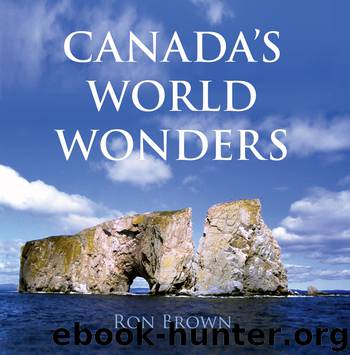Canada's World Wonders by Ron Brown

Author:Ron Brown
Language: eng
Format: epub
Publisher: Dundurn
Published: 2018-08-07T16:00:00+00:00
The gold miners’ community of Bourlamaque near Val d’Or in northern Quebec is North America’s largest community constructed entirely of logs.
TWENTY
FORTRESS OF LOUISBOURG:
NORTH AMERICA’S LARGEST HISTORIC RE-CREATION
THE FORTRESS
The first look the visitor has of this massive reconstruction is one of awe. Here, on a barren point of land jutting into the windy Atlantic Ocean, sit massive stone walls that surround an entire eighteenth-century fortified French town. Except that the buildings here were built after 1961. A UNESCO World Heritage Site, Fortress of Louisbourg is North America’s largest historic reconstruction project.
To be clear, a fortress is not the same thing as a fort. While the latter is a fortified military compound, a fortress is an entire fortified town.
For much of the eighteenth century, France and Great Britain waged war over their North American possessions. One of the many peace treaties that occasionally interrupted the fighting was the Treaty of Utrecht, signed in 1713. This one forced France to give up much of its North American maritime territory, keeping Île Royale (today’s Cape Breton Island) and Île Saint-Jean (today’s Prince Edward Island). To help defend their remaining territory, the French government undertook to construct a fortified town on the northeastern point of Cape Breton Island, where they could both protect vital shipping lanes and establish a seat of government.
Construction began in 1719, and twenty years later the population stood at over two thousand, two-thirds of whom were civilians. The town included hotels, taverns, industries, and private homes, as well as a massive stone barracks and governor’s house. Taking four years to construct, the four kilometres of walls measured ten metres high and twelve metres thick, and just to be safe, they added a moat. In its time, it was North America’s largest fortified town. So much did it cost that King Louis XlV, after whom it was named, claimed that he had expected to be able to see it from France.
The ice-free harbour became a key port of call for merchant and naval ships as well as fishers, and it was vital in the cross-Atlantic and West Indies trading routes. In fact, it became the third-busiest port in North America.
However, the two warring nations were not quite finished fighting. The engineers who planned and built the fortress overlooked one thing. While the harbour side was well fortified, the land side was not. In 1744 war again erupted, and Britain captured the great fortress, occupying it for four years. That ended in 1748 when the Treaty of Aix-la-Chapelle returned the fortress to the French. As usual, the peace did not last, and in 1756 the two were at it again. When the British laid siege to Louisbourg in 1758, they captured the town once more. Then, after deporting Louisbourg’s entire population back to France, the British demolished everything. Five years later, the Treaty of Paris ended France’s presence in North America (with the exception of the tiny islands of Saint-Pierre and Miquelon off the coast of Newfoundland, which are still French territories).
For more than 150 years, the extensive field of ruins lay overgrown and open to the Atlantic winds.
Download
This site does not store any files on its server. We only index and link to content provided by other sites. Please contact the content providers to delete copyright contents if any and email us, we'll remove relevant links or contents immediately.
Canadians by Roy MacGregor(1156)
Chris Chelios by Chris Chelios(1051)
109 Walks in British Columbia's Lower Mainland by Mary Macaree(1009)
Stone by Stone by Liz Bryan(958)
Berlin Travel Guide by Lonely Planet(918)
I Hear She's a Real Bitch by Jen Agg(907)
Germany Travel Guide by Lonely Planet(894)
Liquor, Lust and the Law by Aaron Chapman(888)
From the Tundra to the Trenches by Eddy Weetaltuk(881)
Moon Atlantic Canada by Andrew Hempstead(838)
105 Hikes in and Around Southwestern British Columbia by Stephen Hui(836)
The Prince by unknow(832)
1,000 Places to See in the United States & Canada Before You Die by Patricia Schultz(826)
Uncle John's Bathroom Reader Plunges into Canada by Bathroom Readers' Institute(825)
Wine by Rod Phillips(816)
DK Eyewitness Top 10 Travel Guides Montreal & Quebec City by DK(798)
How to Move to Canada by Terese Loeb Kreuzer Carol Bennett(787)
Hidden Ontario by Terry Boyle(778)
50 Best Girlfriends Getaways in North America by Marybeth Bond(777)
